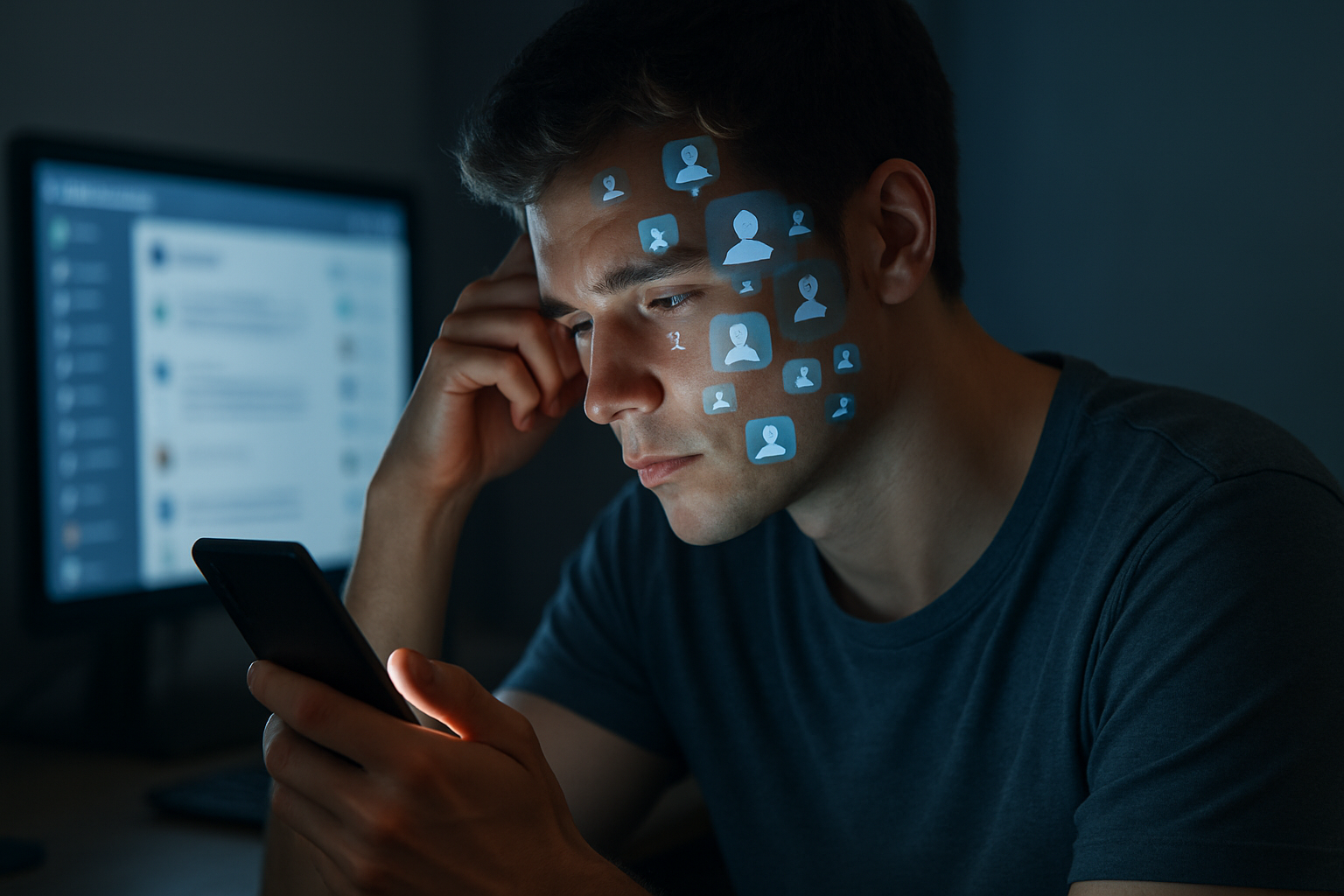Anxiety in the Digital Age: Navigating Modern Stressors
Anxiety has become an increasingly prevalent mental health concern in the United Kingdom, with recent studies suggesting that nearly one in five adults experiences symptoms of anxiety or depression. This surge in anxiety levels can be attributed, in part, to the unique stressors of modern life, particularly those stemming from our increasingly digital world. From the constant barrage of information to the pressures of social media, the digital age has introduced new challenges to our mental wellbeing. As we grapple with these modern anxieties, it's crucial to understand their origins, impacts, and potential solutions to foster a healthier relationship with technology and improve our overall mental health.

Moreover, the sheer volume of information available at our fingertips can be overwhelming, leading to decision fatigue and a sense of constant pressure to stay informed. This information overload, coupled with the rapid pace of technological change, can create a pervasive sense of unease and inadequacy, as individuals struggle to keep up with the latest trends and developments.
Social Media and the Anxiety Epidemic
Social media platforms have become an integral part of modern life, offering unprecedented opportunities for connection and self-expression. However, they have also been linked to increased levels of anxiety, particularly among younger generations. The curated nature of social media feeds can create unrealistic expectations and foster feelings of inadequacy as users compare their lives to the highlight reels of others.
Furthermore, the constant need for validation through likes, comments, and shares can lead to a cycle of anxiety and self-doubt. The fear of missing out (FOMO) is another phenomenon exacerbated by social media, as users are constantly exposed to the activities and experiences of their peers, leading to feelings of exclusion and anxiety about one’s own choices and experiences.
Work-Life Balance in the Age of Remote Work
The COVID-19 pandemic accelerated the shift towards remote work, blurring the boundaries between professional and personal life even further. While remote work offers flexibility and convenience, it has also introduced new challenges to maintaining a healthy work-life balance. The ability to work from anywhere at any time can lead to an ‘always-on’ mentality, making it difficult to establish clear boundaries and disconnect from work-related stressors.
Additionally, the lack of face-to-face interaction and the reliance on digital communication tools can contribute to feelings of isolation and anxiety, particularly for those who thrive on social interaction in the workplace. The pressure to appear productive and available at all times can also lead to increased stress and anxiety levels among remote workers.
Digital Detox: Strategies for Managing Tech-Induced Anxiety
As awareness of the potential negative impacts of excessive technology use grows, many individuals are exploring ways to reduce their digital dependence and mitigate associated anxiety. Digital detox strategies have gained popularity as a means of reclaiming control over one’s relationship with technology and improving overall mental wellbeing.
These strategies can range from simple practices like setting designated screen-free times or creating tech-free zones in the home, to more intensive approaches such as embarking on multi-day digital detox retreats. Mindfulness techniques, such as meditation and deep breathing exercises, can also be effective in managing anxiety and reducing the urge to constantly check devices.
The Role of Digital Wellness Tools
Ironically, technology itself can play a role in managing tech-induced anxiety. A growing number of digital wellness tools and applications are designed to help users monitor and regulate their technology use. These tools can provide insights into screen time habits, block distracting apps during designated periods, and even gamify the process of reducing device usage.
Moreover, mental health apps offering guided meditation, mood tracking, and cognitive behavioural therapy exercises have become increasingly popular. While these digital solutions should not replace professional mental health support, they can serve as valuable supplementary tools for managing anxiety and promoting overall wellbeing.
Reframing Our Relationship with Technology
Ultimately, addressing anxiety in the digital age requires a fundamental shift in how we approach and interact with technology. Rather than viewing digital devices and platforms as inherently problematic, the focus should be on developing a more mindful and intentional relationship with these tools.
This might involve setting clear boundaries around technology use, prioritising face-to-face interactions, and cultivating hobbies and interests that don’t revolve around screens. Education plays a crucial role in this process, with schools and workplaces increasingly incorporating digital literacy and wellbeing programmes to help individuals navigate the challenges of the digital landscape.
The Future of Mental Health in a Digital World
As technology continues to evolve and integrate further into our daily lives, the intersection of mental health and digital wellbeing will likely become an increasingly important area of focus. Research into the long-term impacts of technology use on mental health is ongoing, and new strategies for managing digital-age anxieties are constantly emerging.
The key lies in striking a balance between harnessing the benefits of technology and preserving our mental wellbeing. By fostering awareness, promoting healthy digital habits, and prioritising mental health, we can work towards creating a digital landscape that enhances rather than detracts from our overall quality of life.
In conclusion, while the digital age has introduced new challenges to our mental health, it has also provided us with unprecedented tools and resources for managing these challenges. By approaching technology use mindfully and prioritising our mental wellbeing, we can navigate the complexities of the digital world while maintaining a sense of balance and inner peace.




